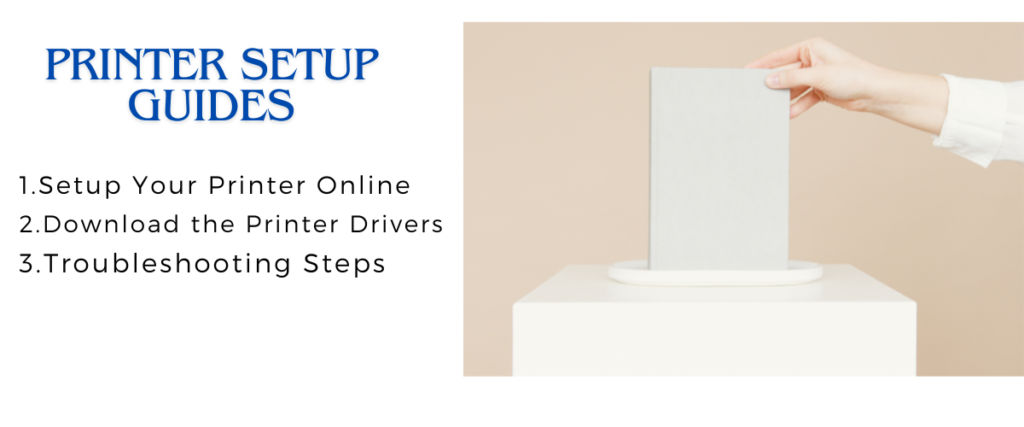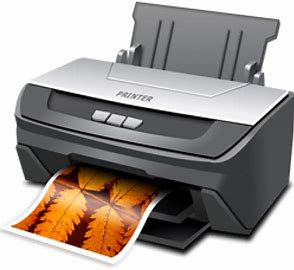
Setting up a new printer can be an easy process when you follow the right steps. Whether you have a wired or wireless printer, proper setup ensures smooth operation and high-quality printing. A well-configured printer not only saves time but also prevents common issues like connection failures or driver conflicts.
Understanding the setup process can also help in troubleshooting minor problems that may arise in the future. This guide will walk you through the entire process, from unboxing to installing necessary drivers and software, ensuring a seamless printing experience.
Step 1: Unboxing and Preparing the Printer
Unpack the printer and remove all protective tapes and packaging materials.
Place the printer on a flat, stable surface near a power source and computer.
Install ink or toner cartridges as per the manual instructions.
Load paper into the input tray and adjust the guides properly.
Step 2: Connecting the Printer
For Wired Printers:
Connect the printer to the computer using a USB cable.
Plug the power cord into an electrical outlet and turn on the printer.
For Wireless Printers:
Turn on the printer and access the control panel.
Navigate to the Wi-Fi settings and select your home network.
Enter the Wi-Fi password and confirm the connection.
Ensure your computer is connected to the same Wi-Fi network.
Step 3: Installing Printer Drivers
To ensure the printer functions properly, installing the correct drivers is essential. Follow these steps:
Visit the website of for printer’s drivers .
Search for your printer model using the downloads section.
Download the latest driver compatible with your operating system (Windows/Mac).
Open the downloaded file and follow the on-screen installation instructions.
Restart your computer to complete the installation process.
Step 4: Testing and Troubleshooting
Print a test page to confirm the printer is working correctly.
If issues arise, check the printer’s connection and ensure the drivers are correctly installed.
Refer to the printer’s manual or the website for troubleshooting tips.

How to Fix a Printer That Is Offline
If your printer appears offline, try the following solutions:
Check the Printer Connection: Ensure the USB cable is securely connected or that the wireless network is active.
Restart the Printer and Computer: Turn off both devices, wait a few seconds, and then turn them back on.
Set the Printer to Online Mode:
Open ‘Control Panel’ on your computer.
Go to ‘Devices and Printers.’
Right-click on your printer and select ‘See what’s printing.’
Click ‘Printer’ in the menu bar and uncheck ‘Use Printer Offline.’
Update or Reinstall Printer Drivers: Follow Step 3 to ensure you have the latest drivers installed.
Clear Print Jobs:
Open ‘Devices and Printers,’ right-click your printer, and select ‘See what’s printing.’
Click ‘Printer’ and choose ‘Cancel All Documents.’
Check for Software Conflicts: Ensure your firewall or antivirus software is not blocking the printer.
Run the Printer Troubleshooter:
On Windows, go to ‘Settings’ > ‘Update & Security’ > ‘Troubleshoot.’
Select ‘Printer’ and follow the on-screen instructions.
Printer Not Connecting to Wi-Fi
If your printer is not connecting to Wi-Fi, try the following troubleshooting steps:
Restart the Printer and Router: Turn off both devices, wait a few seconds, then turn them back on.
Check Wi-Fi Network: Ensure your printer is within range of the router and connected to the correct network.
Re-enter Wi-Fi Credentials: Go to the printer’s Wi-Fi settings and re-enter the SSID (network name) and password.
Update Printer Firmware: Visit the website to download and install the latest firmware for your printer.
Disable VPN or Firewall: Sometimes, security settings can block the printer from connecting to Wi-Fi.
Reset Network Settings on Printer: Access the printer’s settings and restore network defaults, then reconnect to Wi-Fi.
Manually Assign an IP Address: If your printer isn’t detected automatically, set a static IP address through the printer’s control panel.
Check for Interference: Other electronic devices or walls may cause signal interference—try moving the printer closer to the router.
Frequently Asked Questions (FAQs)
Q1: Why is my printer not printing even though it is connected? A: Check if there are any pending print jobs in the queue, ensure the correct printer is selected, and restart both the printer and computer.
Q2: How do I find my printer’s IP address? A: You can find it in the printer settings menu, on a network configuration page (printed from the printer itself), or via your router’s connected devices list.
Q3: What should I do if my printer is printing blank pages? A: Ensure the ink or toner cartridges are properly installed and not empty. Run the printer’s cleaning cycle to unclog printheads.
Q4: Can I set up my printer without a CD? A: Yes, you can download the latest drivers from the website and install them manually.
Q5: How do I reset my printer to factory settings? A: Navigate to the printer’s settings or setup menu and look for the ‘Reset’ or ‘Restore Default Settings’ option.
Q6: Why is my wireless printer not detected by my computer? A: Ensure both devices are on the same network, restart the printer and router, and reinstall the printer on your computer.
Q7: What should I do if my printer prints too slowly? A: Check the print settings (draft mode is faster), use a wired connection for stability, and ensure your printer’s firmware is up to date.